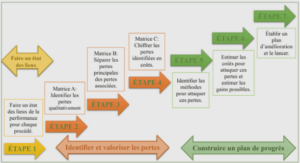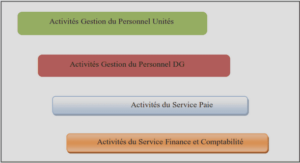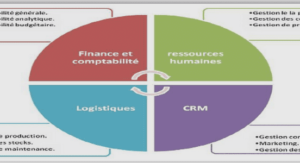Importance and Impact of the English Language
The Microsoft Encatta Encydopedia (2000) states that the English language is the chief medium of communication of many major countries. It is also the official language in many nations of the Commonwealth of Nations. It is spoken by more parts of the world (62 countries) than any other language, except Chinese (Mandarin). The encyclopaedia discusses the extensiveness of its vocabulary. There are from 500 000 to over 1 000 000 known words. The fact that it borrows a lot from other languages makes it an even more popular and accessible mearn of communication. Nunberg (2000) suggests that with the ai{;ension of the Internet, this tendency can only increase. For instance, the Internet is dominated by English content, in a proportion of 72 % compared to 7 % for its closest counterpart, which is French In other words, it is quite fashionable to be able to use English in different c irctrrnStances.
This predominance for ESL use has been present for over 25 yeats (Lalande, 1988; Seward, 1973). It is practically a necessity to know English as a second language in order to be competitive in many fields, even more so in the present context of globalization and internationalization (Pratte, 1999). Traveling ahnost anywhere on the North American continent requires English, for it is the official language in the United States and one of the two official languages of Canada (Government of Canada, 1999). Canadian Amerindians also primarily use English a8 a mearn of communication with the rest of Canadians (Government of Canada, 1998). Many Quebecets are now over the scare of assimilation-of English taking over French (Des Rivieres, 1999). The new fear is the possibility of unilingualism that would limit Quebec’s strength in many areas. For all there reasons, .Quebec secondary 5 ESL is.now a college prerequisite (MEQ, 1997a). Furthermore, the elementary ESL MEQ program (2002) begins in grade 3 instead of grade 4, as of September 2002. Even in the USA, the minirmun high school graduation requiremmts for standard diplomas include the knowledge of one to four foreign languages (U.S. Department of Education, 1994).
Among other elements, what seems to guide some teaclers is the program;, as they give an idea of what the MEQ expectations are. Presently, there are three programs at the CSRN: the elementary program, the secondary first-cycle program, and the secondaty second-cycle program The elementary program used to be taught from grades 4 through 6. Considering the importance ofleaming the L2 at an early age, the elementary ESL MEQ program (2002) now begins in grade 3. The secondary programs are taught from secmdary 1 to 5 (MEQ, 1982; 1985). The program focuses on four learning abilities namely listening, reacmg, writing, and speaking. Speaking is coosidered the most important skill (Lalande, 1988 and William; and Sharp, 1997). Also, in 1996 according to the The lllinois Council on the Teaching of Foreign Language Accents (ICfFLA), achieving oral communication is the primary goal for foreign language study today. The latest elementary-levelprogram, which is bared on the present reform, emphasizes that the speaking competency should be at 100 % (MEQ, 2002; Johnston, 2000). Johnston, an MEQ collaoorator, added at the 2000 SPEAQ (Societe pour la promotion de l’enseignement de I’anglais, langue seconde, au Quebec) coovention, that this percentage is a good indicator for the future reform bared secoodary-level program (effective in 2003-2004). For the existing secmdary program;, the oral production objective acoounts for 16% to 20%, the other percentages being 20% to 24% for writing, 30% to 36% for reading and 24% to 30% for listening (MEQ, 1982; 1985), depending on the level. As mentioned previously, because English is used all over the world, Quebec secmdary 5 ESL is now a college requirerrent (MEQ, 1997a). College progra:trn are also adapting themselves by focusing on the mastery of a SL. As of 1994, there are now two compulsory courses, compared to none prior to the acljustrnent (MEQ, 1998). Following other universities’ initiative, as of2002-2003 the University of Querec network should also add an obligatory English cotrrSe to every bachelor degree (Jean, 2001 ).
Having such progratm also represents a major drawback for specialists. Caochon (1997) mentions that the above progratm are renewed approxima1ely every 15 years. Therefore, they are often outdated and do not deal with current needs. Another problem is the use of progratm as guides. Many teacrers do not or seldom use/consult their progratm (Shkedi, 1998). Consequently, the required percentages related to each objective/competency are not reEpec1ed Often, teachers will adapt their teaching to their skills, preferences, personalities and students. The emphasis will then be on portions of the program and not on what is required or suggested. They do this because of personal opinions and preferences, which may diverge from the MEQ suggestions and objectives.
A solution that could palliate the lack of curriculum information is the specialized training from universities, which leads to an ESL teaching diploma. Indeed, having studied in the field of ESL, we believe some practioners might be more aware of the MEQ program requirements. A Quebec linguist, Professor Bibeau, affirms that elementary-school English is often taught by non-specialized teachers (Pratte, 1999). He adds that many of them do not even speak English. The situation at the secondary level is not much better. Indeed, the MEQ reports that less than half of the ESL teacrers have a diploma in the field (Sociere Radio-Canada, 2001 ). The situation at the CSRN is different, as approximately 60 % of the teacrers have an ESL degree of some kind ( certifica1e, bachelor’s or master’s). Furthermore, even if the teaching of foreign languages has gained in popularity at many levels, Lalande (1988) adds that the recruitment issue is still a major problem Pemap:; promotion is what universities and the MEQ should emphasize on, in order to have more qualified teachers. For instance, promoting ESL teaching degrees to college students could possibly cocrectthe prerent shortage.
Time Constraints and Teachers’ Use of Time
Even if all the teachers were qualified, there would still be some restrictions at different levels. A major restrictive area is time. Students do not have enough allotted time for them to acquire a sufficient proficiency level (Info-PPAALS, 1999; Johnston, 2000; SPEAQ Out, 2001). The .MEQ does suggest a minirmun of teaching time for ESL. Since this is not compulsory, it is often not respected by many school boards. At the elementary level, currently students get three years of ESL. The courses include 45- to 60-minute classes, twice a week This amounts to approximately 72 hours per year (MEQ, 1997a; SPEAQ, 2000). However, a 1994-1995 provincial survey, which included every school board, demmstrated that students had only 95 minutes of English per week (60 hours a year) (Jnfo-PPAALS, 1999). In order to compensate for the lack of time in the weekly agenda, the .MEQ is now coosidering. adding two extra hours per week of ESL at the primary level (Radio-Canada, 2001 ). For the secondary level the two 75-minute periods per week add up to approximately 100 hours yearly (MEQ, 1982; 1985). Colleges (Cegeps) also offer two compulsory English courses. This adds up to 90 hours (MEQ, 1997a; Jnfo-PPAALS, 1999). Some universities will soon offer a 45-hour obligatory course (Jean et al., 2001 ). Considering that a minimum required time to master a SL is 5000 hours am 1200 for a basic knowledge, the province of Quebec is far from producing bilingual students (Stem, 1992).
INTRODUCTION |





